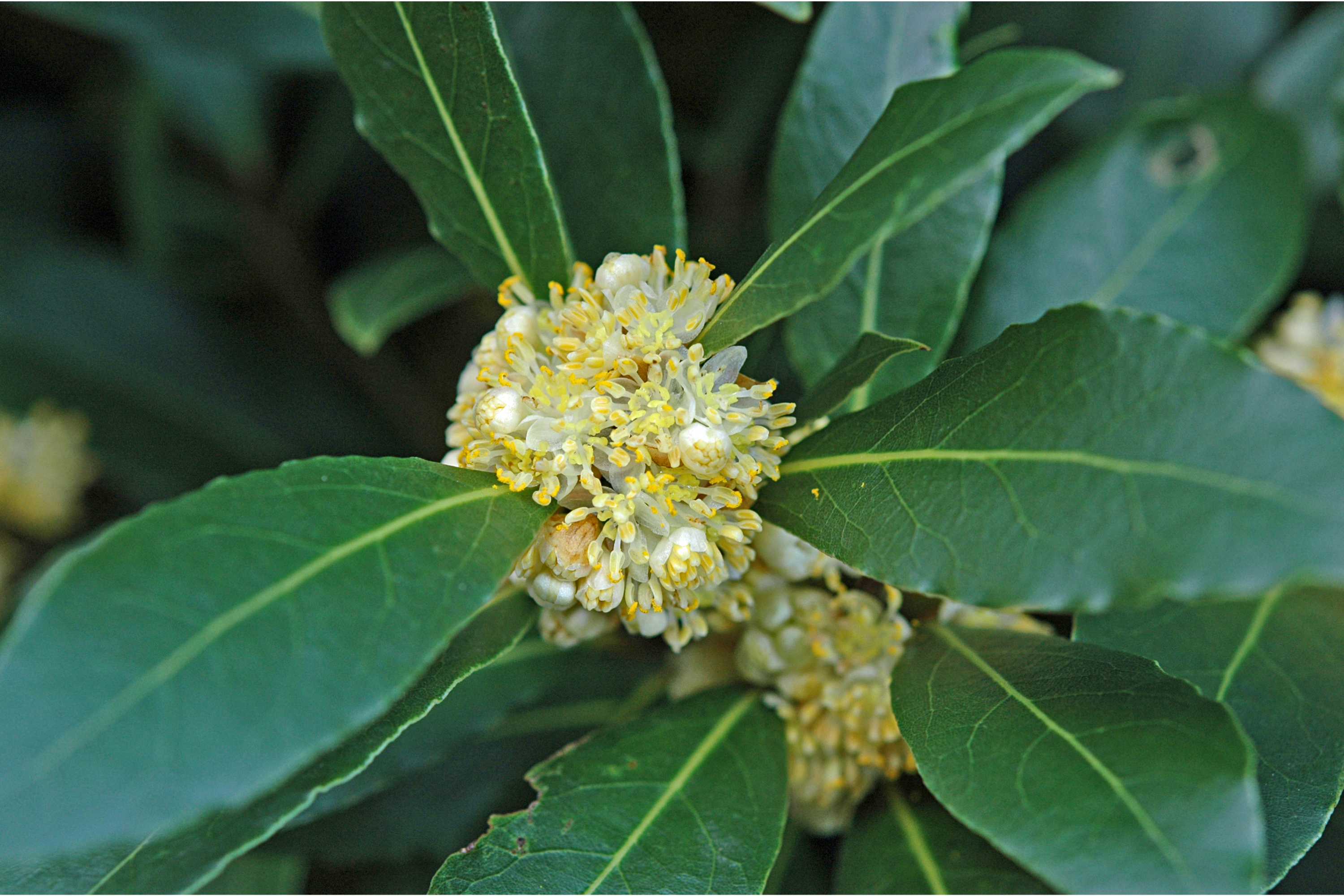Bay laurel
(Laurus nobilis)

Description
Laurus nobilis, commonly known as bay laurel or sweet bay, is a small evergreen tree native to the Mediterranean region. It is a member of the Lauraceae family, which includes other important plants like cinnamon, camphor, and avocado. Bay laurel has been cultivated for thousands of years and is valued for both its culinary and medicinal properties. In this article, we will delve deeper into the biology, history, and uses of Laurus nobilis. Taxonomy and Description Laurus nobilis was first described by the Greek botanist Theophrastus in the 4th century BC. The species name, nobilis, means noble or famous in Latin, and refers to the plant's long history of cultivation and use. Bay laurel is a slow-growing, evergreen tree that can reach heights of up to 12 meters in the wild, although it is usually pruned to a more manageable size in cultivation. The tree has a dense crown of shiny, dark green leaves that are elliptical in shape and about 7-10 cm long. The leaves are leathery and have a distinct, aromatic scent when crushed. The tree also produces small, yellow flowers that are followed by black, berry-like fruits. Distribution and Cultivation Bay laurel is native to the Mediterranean region, including southern Europe, North Africa, and parts of Asia Minor. It grows best in a mild, Mediterranean climate with mild winters and hot, dry summers. The tree is cultivated for its aromatic leaves, which are used in cooking and for making wreaths and garlands. Bay laurel can be propagated from seeds, cuttings, or layering. It is often grown as a container plant in colder climates, but can also be planted outdoors in warm, sunny locations. Uses Bay laurel has been used for centuries in cooking, medicine, and as a symbol of honor and achievement. The leaves are often used in soups, stews, and sauces to add flavor, and are a key ingredient in the French herb blend, "bouquet garni." The dried leaves can also be used to make a tea that is said to aid digestion and relieve respiratory ailments. In addition, bay laurel has a long history of use in traditional medicine, with the ancient Greeks and Romans using it to treat a variety of ailments, including arthritis, headaches, and digestive disorders. Symbolism and Folklore Bay laurel has long been associated with honor, victory, and achievement. In ancient Greece and Rome, wreaths made from bay leaves were given to victorious athletes, poets, and soldiers. The laurel wreath became a symbol of victory and was often depicted in art and literature. Bay laurel is also associated with the Greek god Apollo, who was often depicted wearing a wreath of bay leaves on his head. In addition, bay laurel has been used in traditional folk medicine and folklore to ward off evil spirits and protect against disease. Cautions While bay laurel is generally considered safe for culinary and medicinal use, it should be used in moderation. Ingesting large amounts of bay leaves can cause digestive upset, and the essential oil derived from the leaves can be toxic in high doses. Bay laurel should also be avoided during pregnancy and breastfeeding. Conclusion Laurus nobilis is a versatile and valuable plant that has been cultivated for thousands of years. Its aromatic leaves are used in cooking and traditional medicine, and it has a long history of symbolic and cultural significance. While bay laurel should be used in moderation and with caution, it remains a popular and important plant for many different purposes.
Taxonomic tree:







